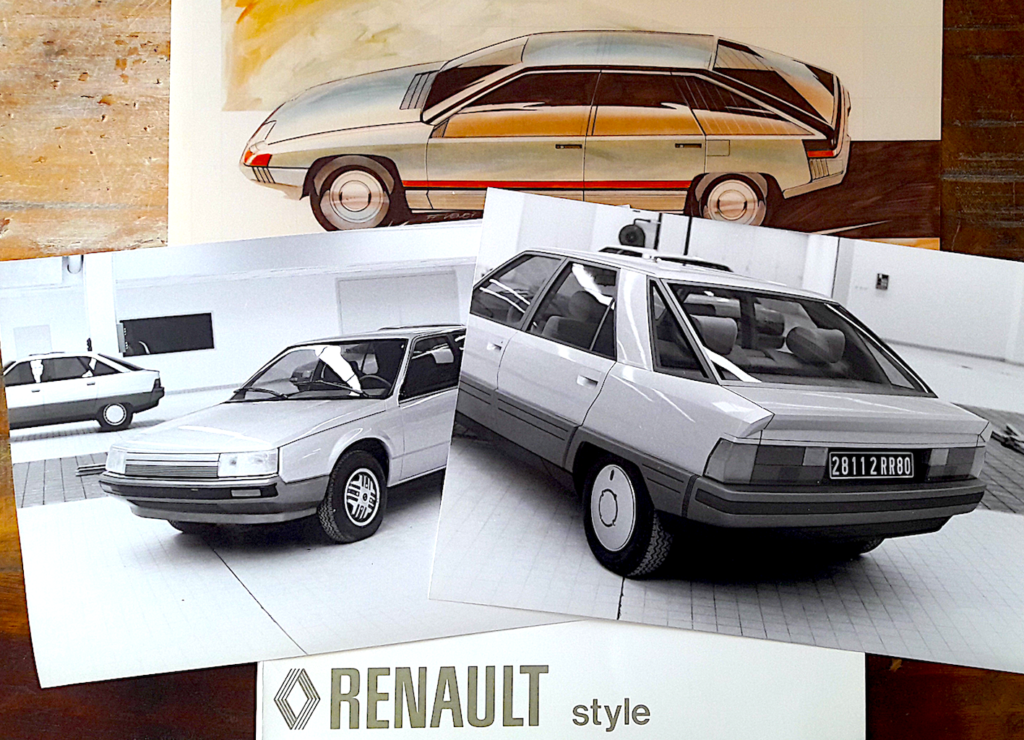

Almost two decades passed between the launch of the R16 in 1965 and the R25 – its granddaughter – in 1984. Yet, like the R30 which came between them, these two cars, which remain the most inspired of Renault’s top-of-the-range models, were the brainchild of the same man: Gaston Juchet, Renault’s leading designer from 1960 to 1987. Project 129 for the R25 was a tougher fight than the R16 below. Here we take a behind-the-scenes look at the genesis of the last truly successful French saloon, from the first sketch to the first prototype.
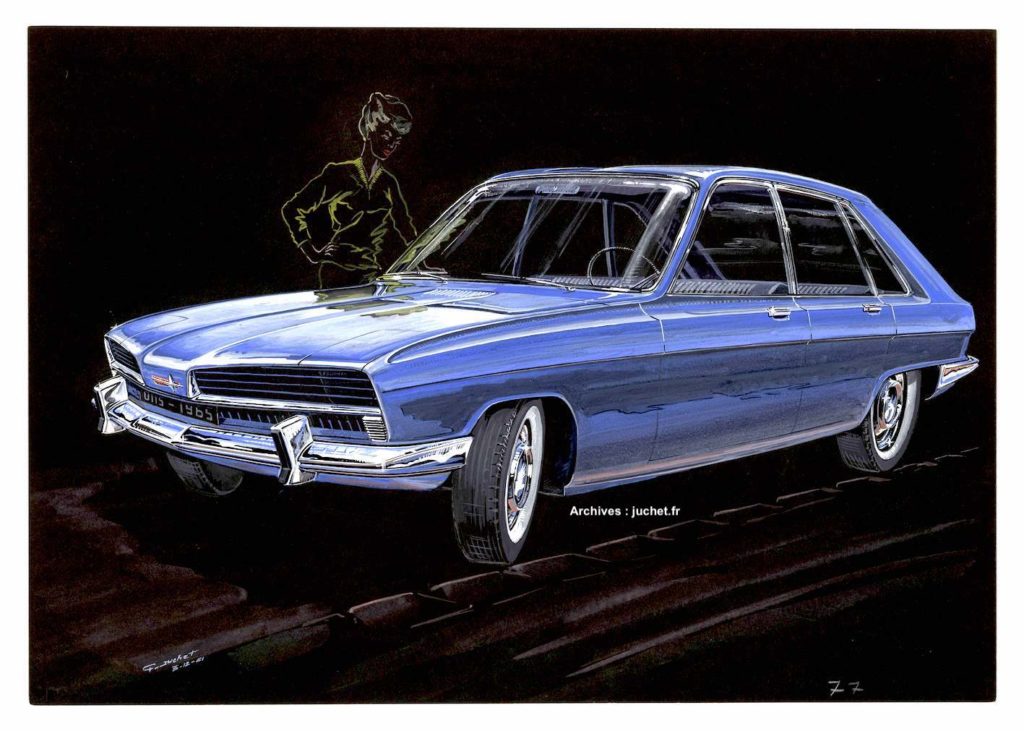
While external competition was quickly ruled out, as we shall see, internal rivalry was exacerbated by proposals from the styling team headed by Jacques Nocher, in addition to those designed by Gaston Juchet himself. Not to mention the opposition of Robert Opron (below), who oversaw all the group’s styling: cars, trucks, tractors, brand identity, etc. The genesis of the Renault 25 is also indicative of the countless changes in the direction of a project’s specifications, as was the case many times over at Renault.
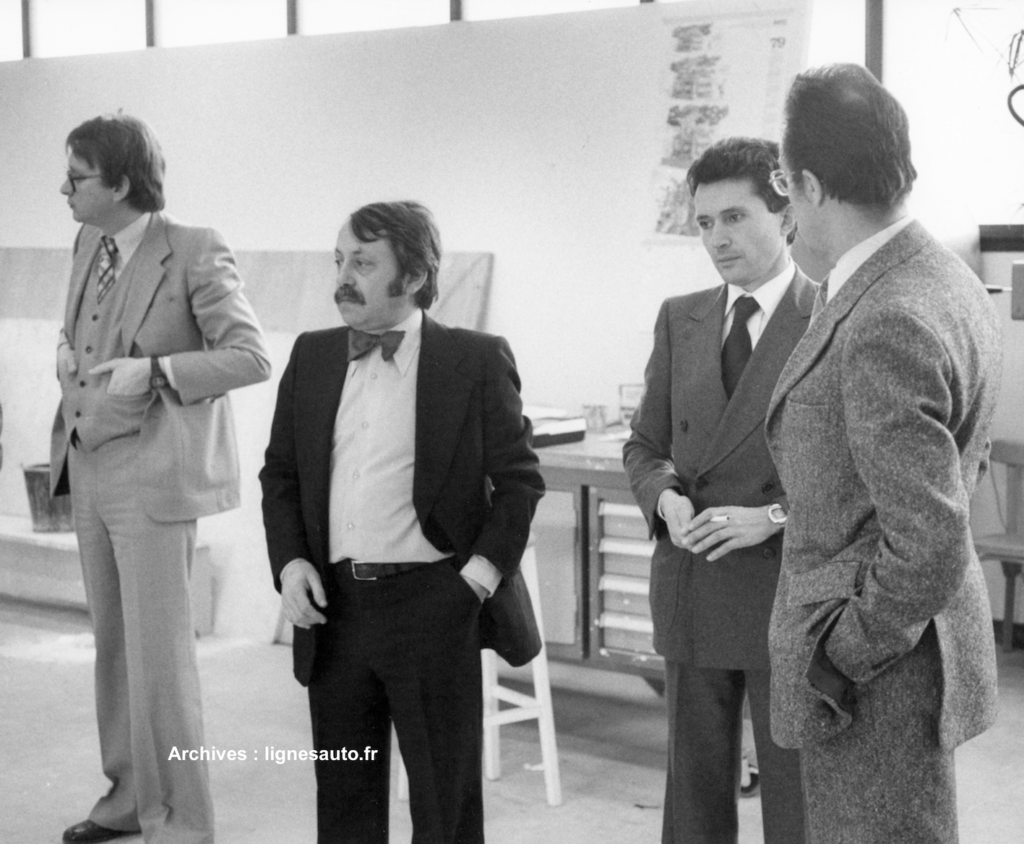
And we’re not talking here about a few details of the specifications. Rather, we’re talking about drastic changes to the car’s size after the first styling freeze in 1980. The design of the 25, like that of the R20/R30 duo, was constantly thwarted by engineering. Here’s a look back at this study, which began in 1978 and was completed in early 1981.
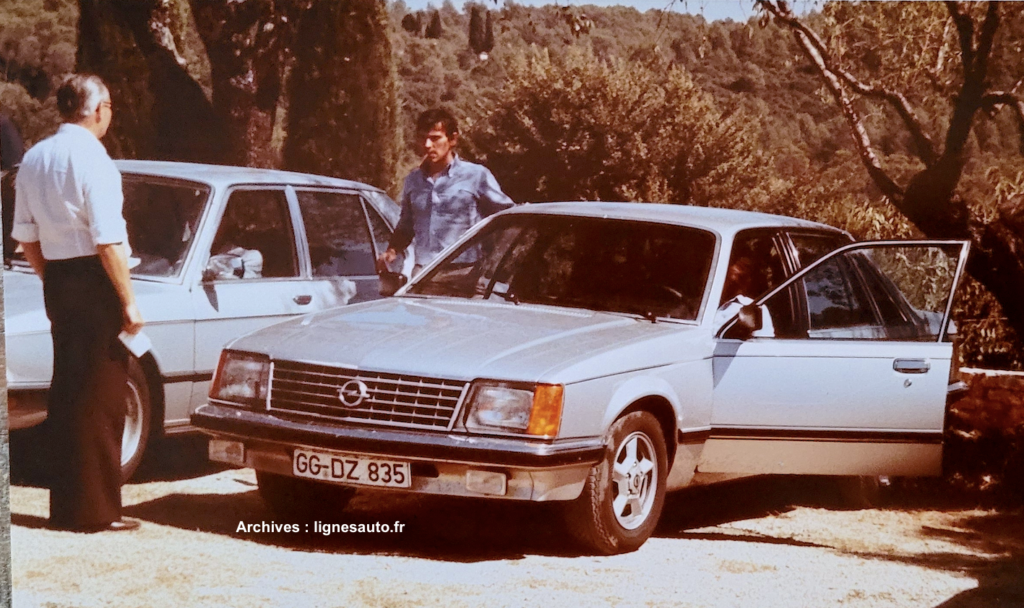
It all began on the track: 1978 was the year of Renault’s only victory in the 24 Hours of Le Mans with an A442B driven by Jean-Pierre Jaussaud and Didier Pironi. Six months later, somewhere near the Le Luc circuit, Renault-Sport boss Gérard Larrousse was back in the Bandol hinterland (above) driving Opels, Peugeots and BMWs. He has formed a small team to carry out comparative tests to help the product department draw up the specifications for the next flagship in the range.
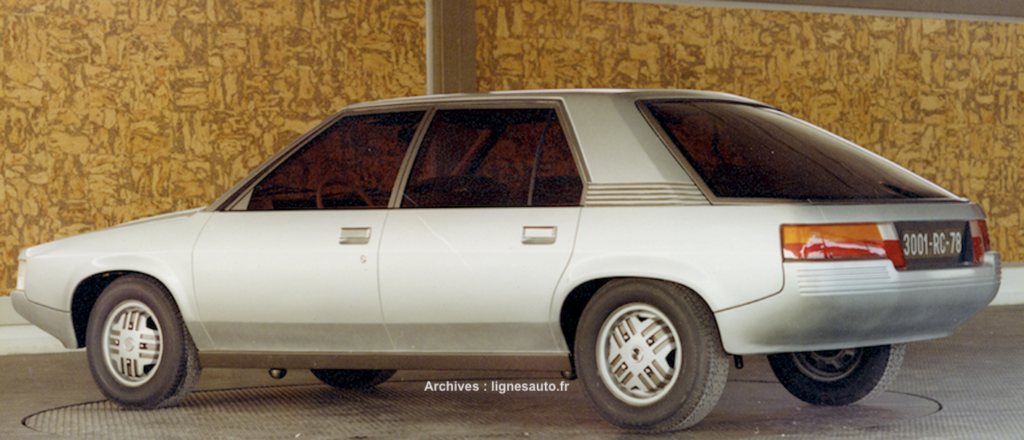
This was the real starting point for project 129 (X-29 in advance), which was to produce a single vehicle capable of replacing both the four-cylinder R20 and the six-cylinder R30. At the same time, just outside Paris, in the Renault design studio headed by Jacques Nocher, Marc Deschamps was producing a model that was almost five metres long. Its large bubble is impressive. It was the ‘M’ model that was secretly tested in the Hilton Hotel in Paris in September 1978, and then in Germany, below.

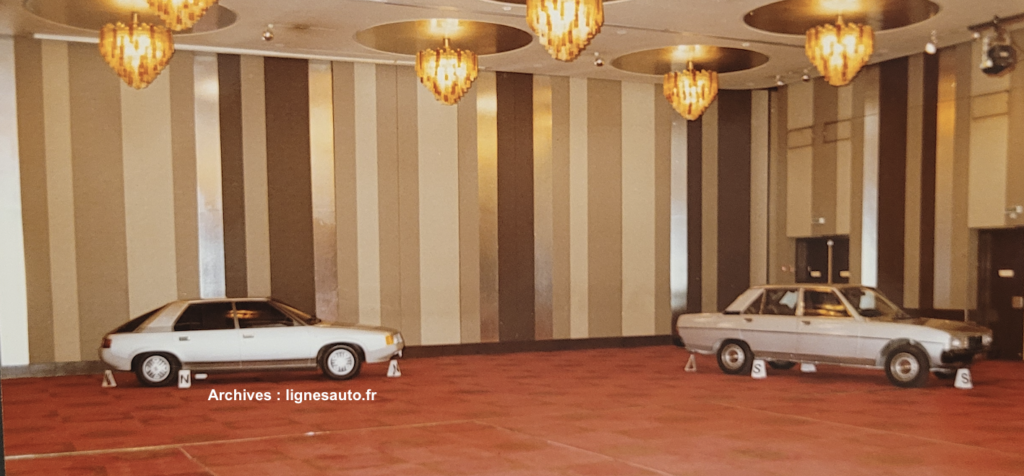
GANDINI COMES INTO PLAY
This first model got a bit of a battering in Germany: its generous size was almost pretentious in the eyes of German customers. Its hatchback concept, although very pure, did not appeal to customers used to classic saloons with boot space. It therefore had to be redesigned to relaunch the programme with dimensions capable of appealing to both R20 and six-cylinder (R30) customers. In May 1979, as soon as the new models had been completed, Renault decided to reassemble them against their competitors.
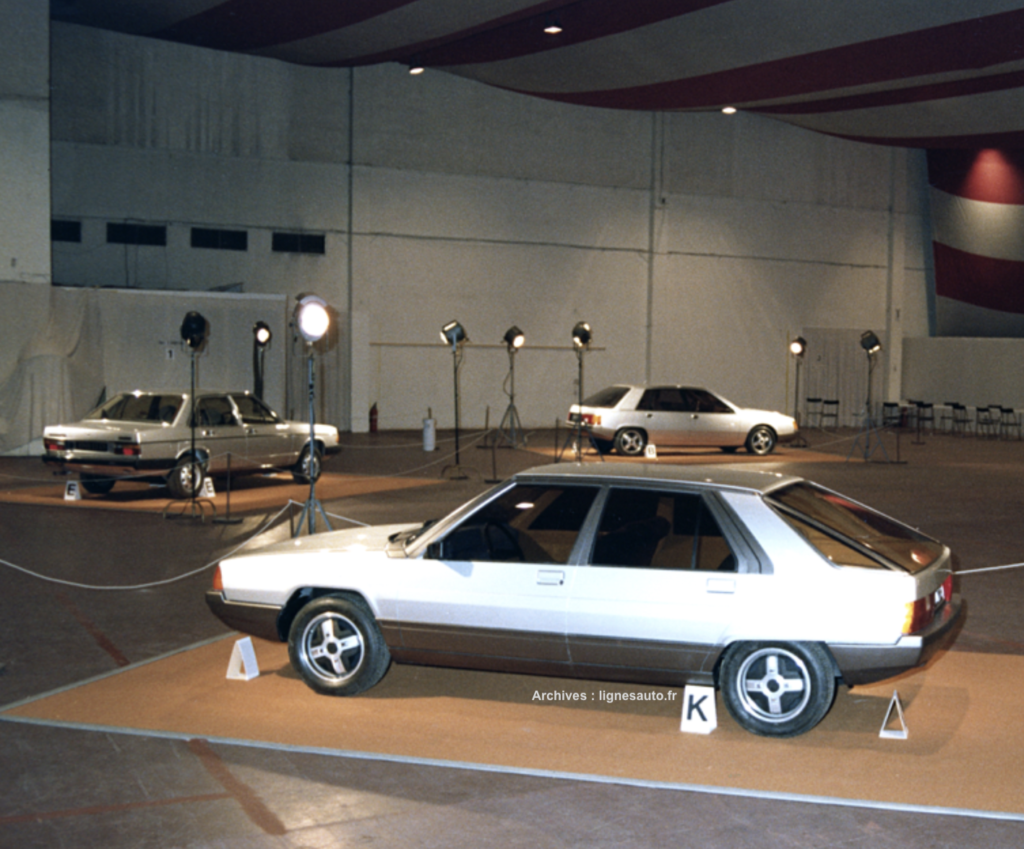
This time, it wasn’t Paris that hosted the secret test, but Lyon. There were the Peugeot 505 (in 1978 at the Hilton Hotel, the latter was not on the market, so the 604 played the role of competitor), Audi 100 and Citroën CX. For project 129, Renault proposed three models. Two were created by Gaston Juchet. One is a classic three-box with three side windows and a flat boot – below – as intended by the product director, Michel Dubrulle, in order to attack the German market.

Alongside it, a hatchback takes up the theme of the 1978 model, but is more compact. It also features a third side window. It should be noted that the raised front and rear fascias of the 1978 model were retained, and would remain until the final product. But this mock-up did not (yet…) solve the problem of the single hatchback.
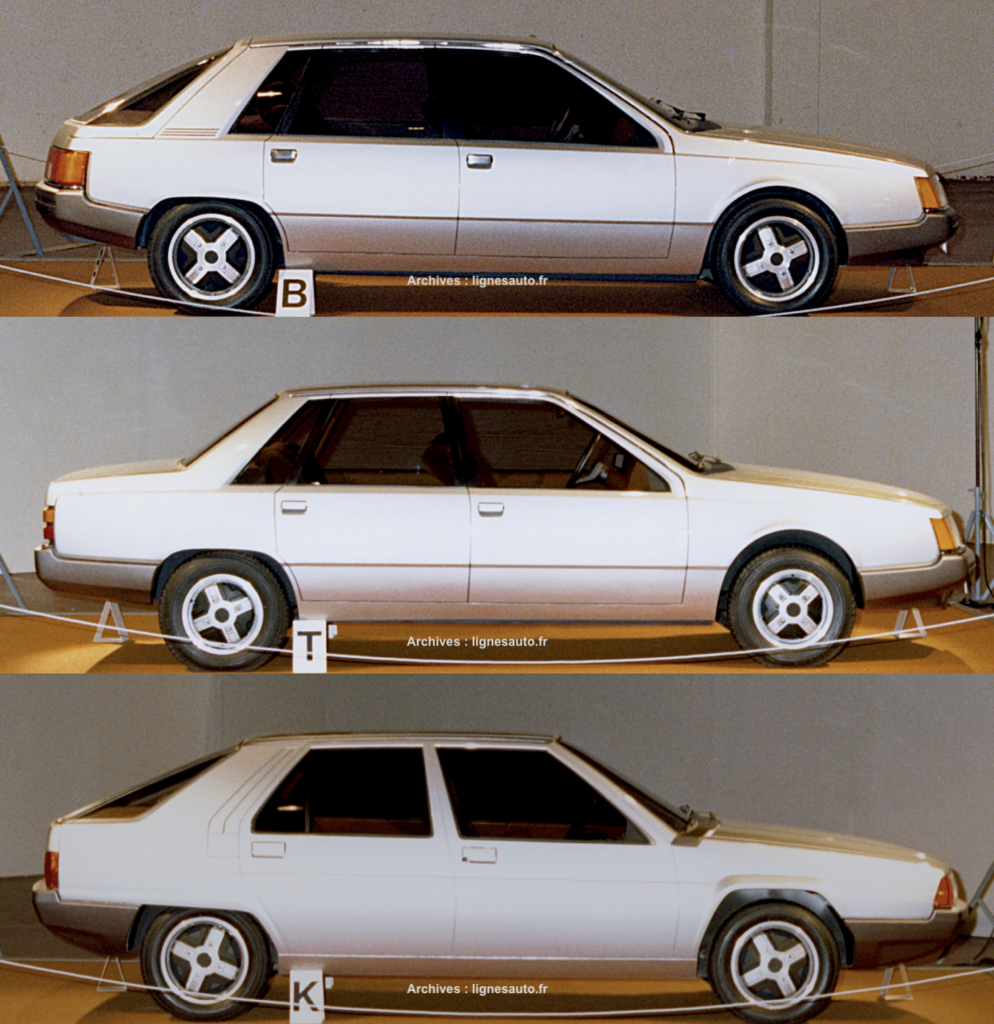
Alongside these two Renault styling proposals is a model by consultant Gandini. His hatchback offers two different body sides. The Italian seems to have retained his usual boldness, no doubt because his highly original Renault 9 model, proposed in 1978, was rejected. The same would be true of Project 129, which took part in the Lyons test in 1979 as well as the one carried out in Dortmund, Germany, in June of the same year.
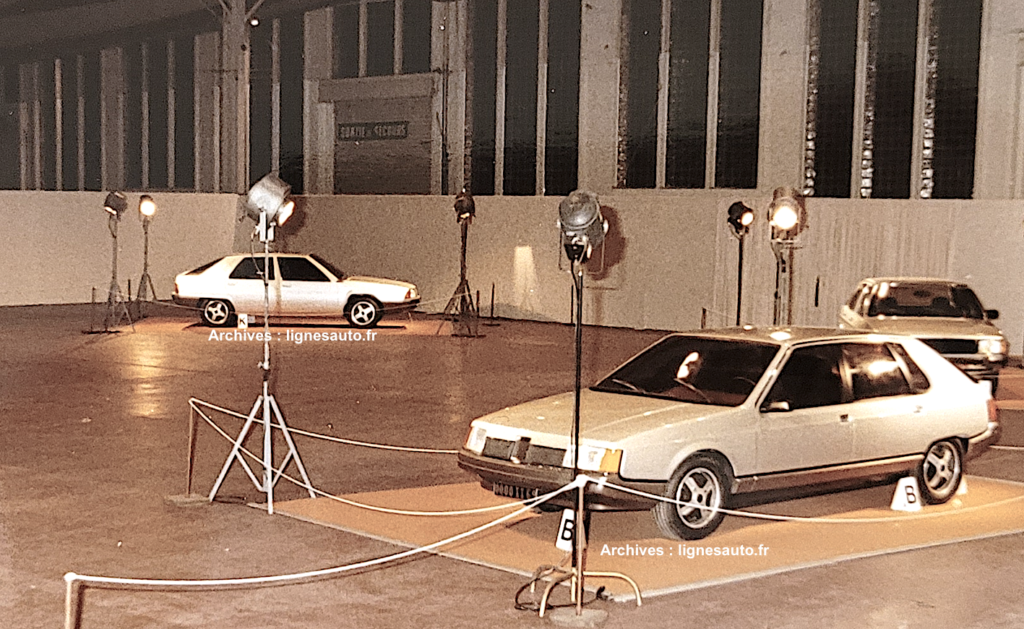
THE VENET RAFALE
The results of these tests were clear: Gandini’s proposal was eliminated, the three-body version had to evolve, while the two-body had to find better controlled proportions. Juchet returned to Rueil to rectify the situation. In October 1979, his hatchback model underwent another test against its competitors. Renault decided to orientate the project towards a more aerodynamic silhouette.
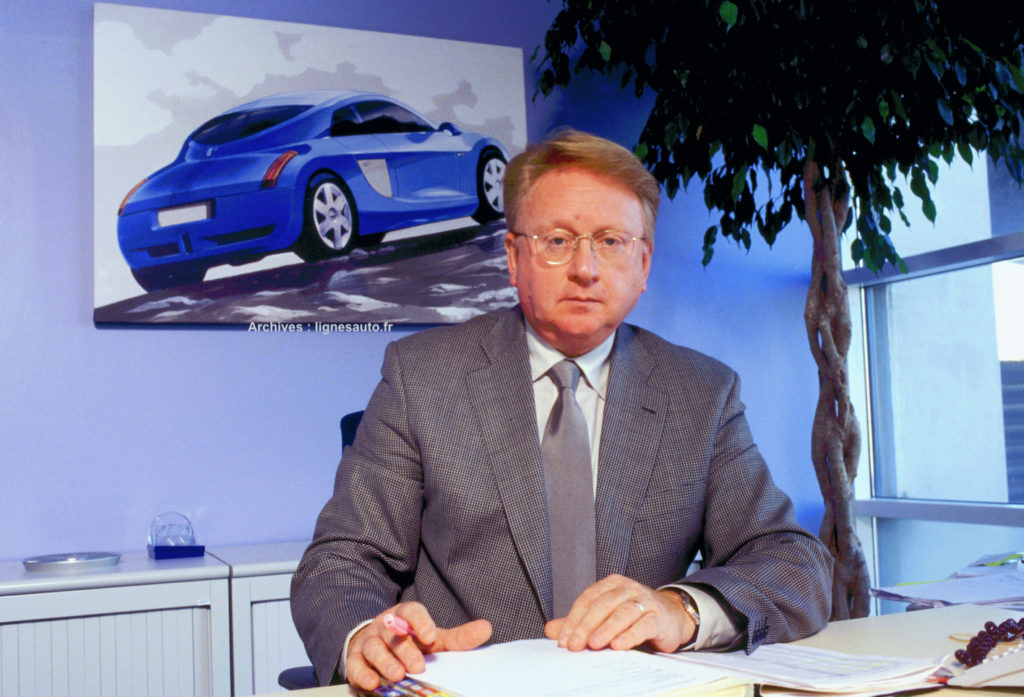
This is where Jean-François Venet comes in, an internal competitor from Jacques Nocher’s advanced design office. This talented designer (1946-2015) had joined the styling studio in 1977, replacing Marc Deschamps who had taken over as head of Bertone styling. At the time, Venet was working on a project for an aerodynamic saloon. He designed this silhouette under the name of the “Rafale” project. His two models differ from those of Gaston Juchet. One has a bubble made up of three planes of glass separated by two thin uprights. The second variant has a single-piece bubble, which makes a link with Gaston Juchet’s proposal. Both are cut with a serp.
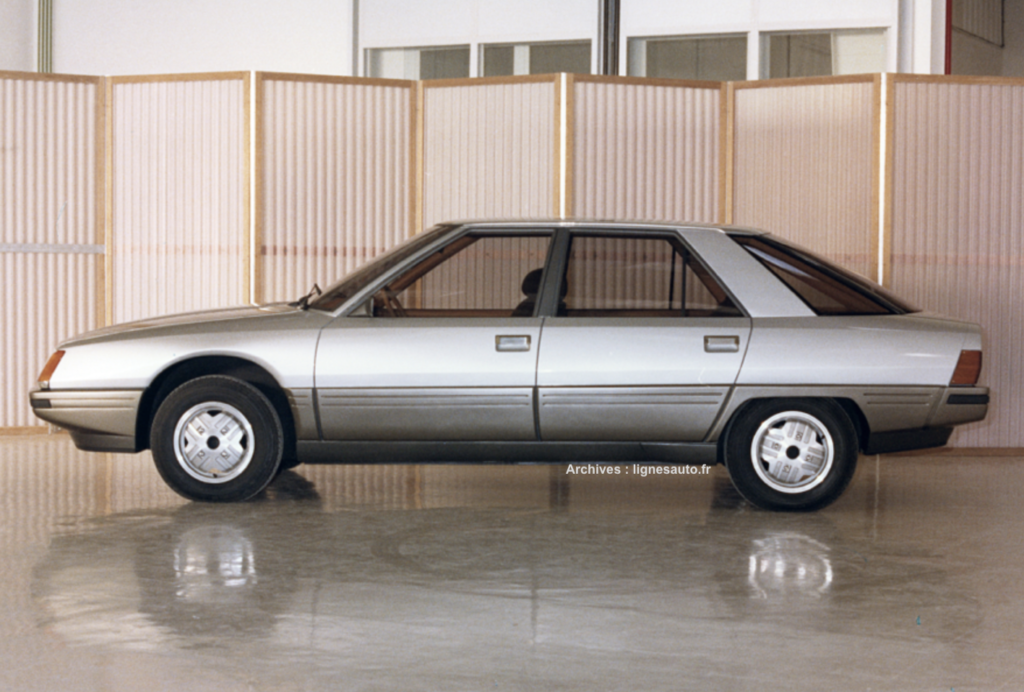
But the overly imposing size did not meet the specifications. Jacques Cheinisse, product manager, explains that “the advanced design office was working on an aerodynamic research project. The 1979 model (registration number 112 RR 79) did not have the dimensions required by the X29 specifications: it was slightly lower, but above all longer.“

For this reason, it did not take part in the next test, which took place in December 1979. Instead, three models by Gaston Juchet were shown, including the Bicaéro. This time, the proportions of the hatchback were the right ones and, although the three-box was still present, it was eventually discarded, despite the product’s desire to push it further forward.
NOCHER – JUCHET: THE DUEL
It wasn’t until February 1980 that Jean-François Venet’s Rafale models, designed under the direction of Jacques Nocher’s studio and supported by Robert Opron, returned. This time, they met the dimensions required by the specifications, and the two versions competed with the three-box and the Bicaero silhouette, both designed by Juchet. Jacques Nocher and Jean-François Venet contributed their models, registered 28112 RR 80 and 402 RR 80 for the bubble version.
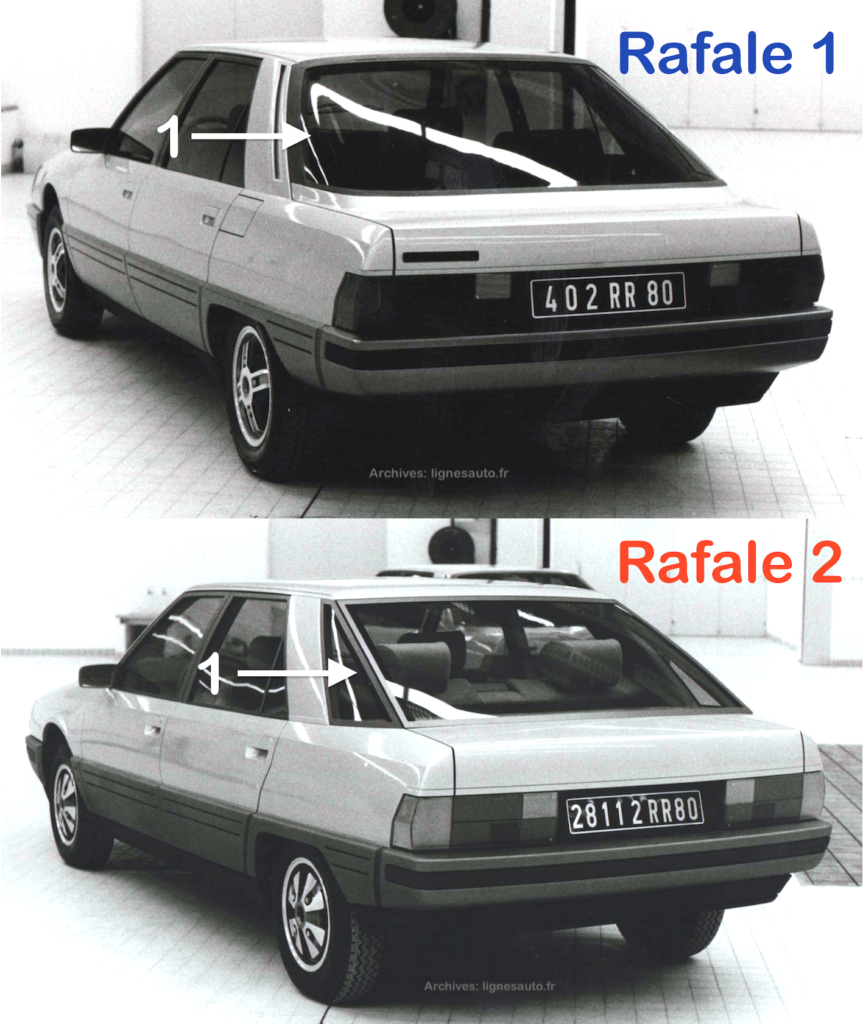
The first is very aerodynamic and differs significantly from the other Rafale. Opposite them, two Bicaéro are presented, with the only difference being the treatment of their sides, with or without protection. At the rear of his model, Gaston Juchet hastily had a small spoiler designed to further refine his Bicaéro and thus counter the Rafale ‘bis’ with its three-sided window. The Opron-Juchet battle seems to have guided the genesis of the R25.
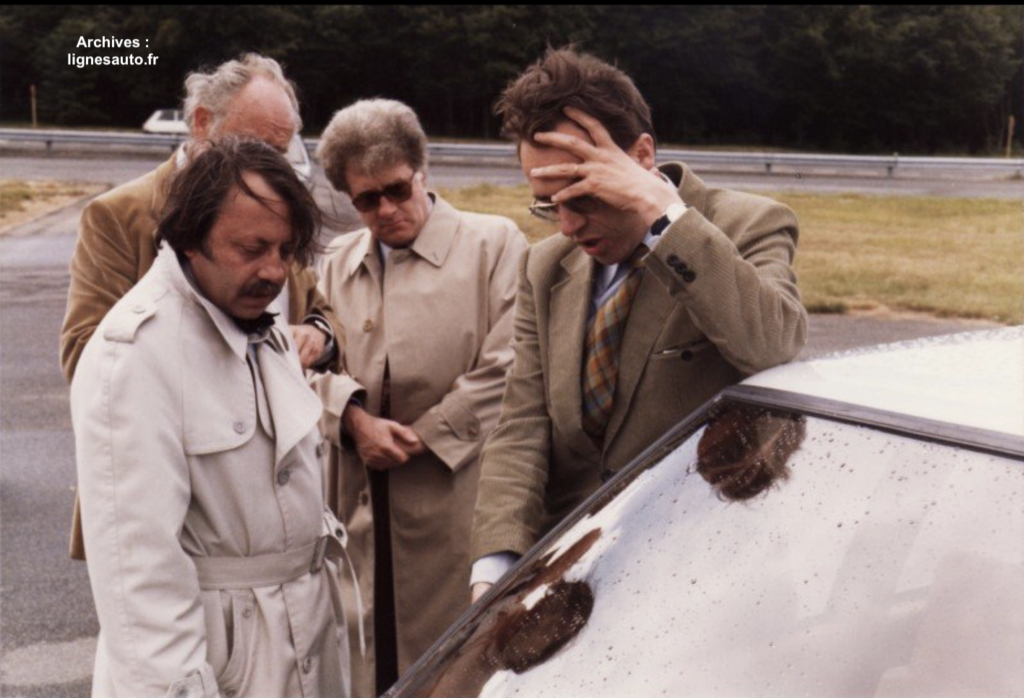
JUCHET RESISTS
This rivalry, although neither direct nor new, as it pitted the head of Renault styling (Juchet) against one of his own teams (the advanced styling team led by Jacques Nocher), came at a pivotal moment in the history of Renault design. Robert Opron was considering the idea of setting up a Renault design office in the United States. Still very much influenced by his Citroën culture, particularly that of aerodynamics, Robert Opron logically supported the project of the unit headed by Jacques Nocher.
DISCOVER THE UNUSUAL RENAULT STYLE PROJECTS FROM 1960 TO 1987 “L’ÈRE GASTON JUCHET” IN THE BILINGUAL BOOK WHICH WON THE “PRIX DU LIVRE HISTORIQUE AUTOMOBILE 2023” HERE: https: //www.youtube.com/watch?v=y9veCCVXckE Addresses for ordering it in the video
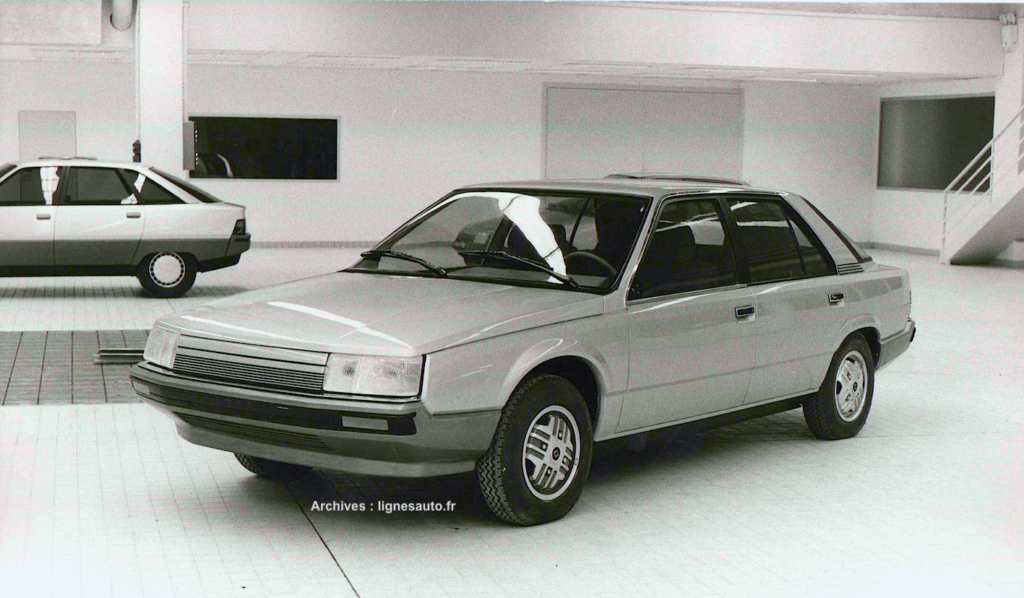
But Gaston Juchet pushed the concept of his Bicaéro even further and, without neglecting the aerodynamic coefficient of his project, he proposed a model with ideal proportions, while respecting the specifications. Shortening Venet’s Rafale was not beneficial to this aerodynamic study, which lost some of its balance, with a width slightly less than Juchet’s proposal. These details are important when it comes to making a choice. Nevertheless, Juchet’s Bicaéro underwent a number of changes during each of the many tests it underwent. At the end of the first test in 1979, Gaston Juchet was asked to lengthen his model.
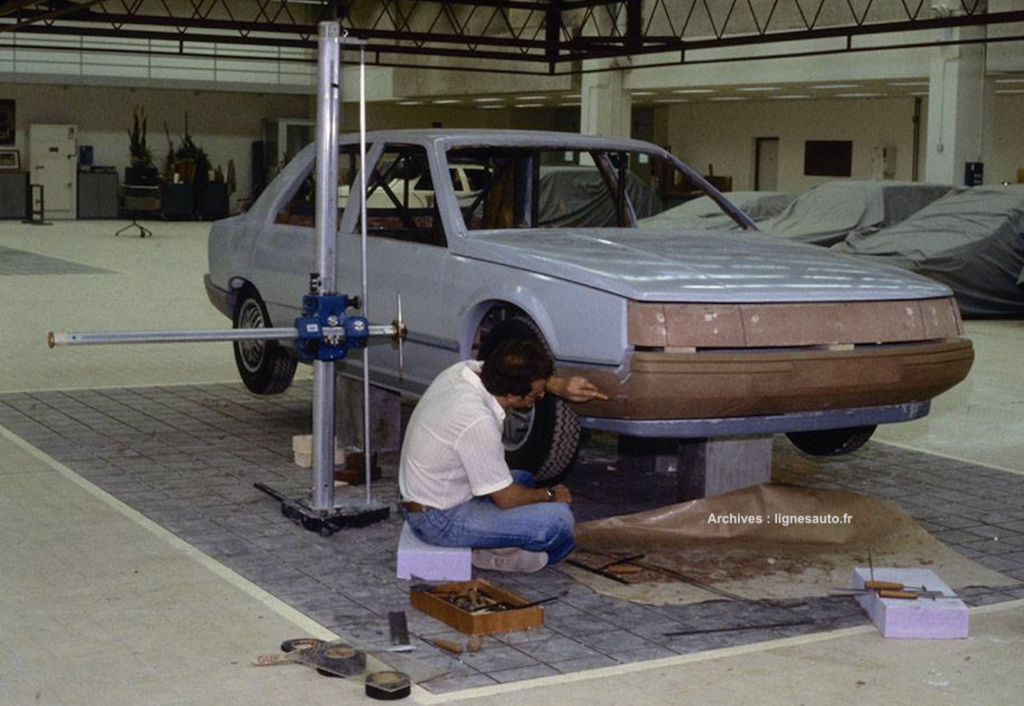
So he came up with the idea of drawing a horizontal return at tailgate level to sketch the beginnings of a trunk and make his hatchback look like a three-box from the side. Eight months later, during another test, he was asked to… shorten the Bicaéro by 10 centimetres! Jacques Cheinisse pointed out that “despite the series of shortenings, the aerodynamic performance of the R25 would be exceptional: the Cx (coefficient of penetration through the air) would be 0.28 for the production R25 GTS, compared with a value of around 0.34 for the average of the competitors in the segment”. Gaston Juchet could pride himself on his aerodynamic skills.
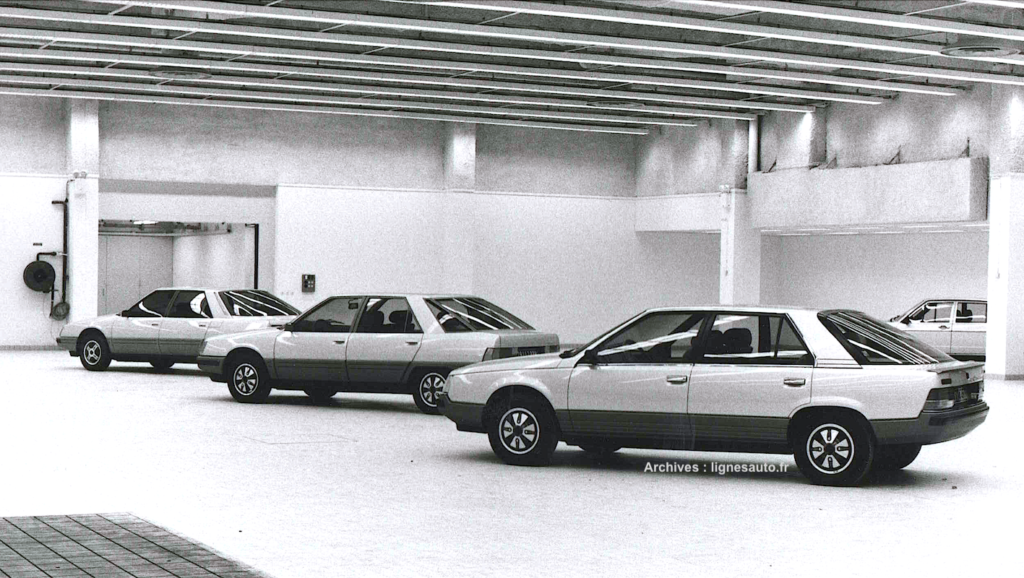
JUCHET : 1 – OPRON : 0
For the final test in the style basement at Nanterre (above), the 129 programme was not alone. The styling studies for Gandini’s Supercinq were revealed. This new generation of city car would be unveiled the same year as the big Renault, in 1984. The EVE concept is also on display. The basement of the rue du Port would have been a scoop-hunter’s dream at the time.
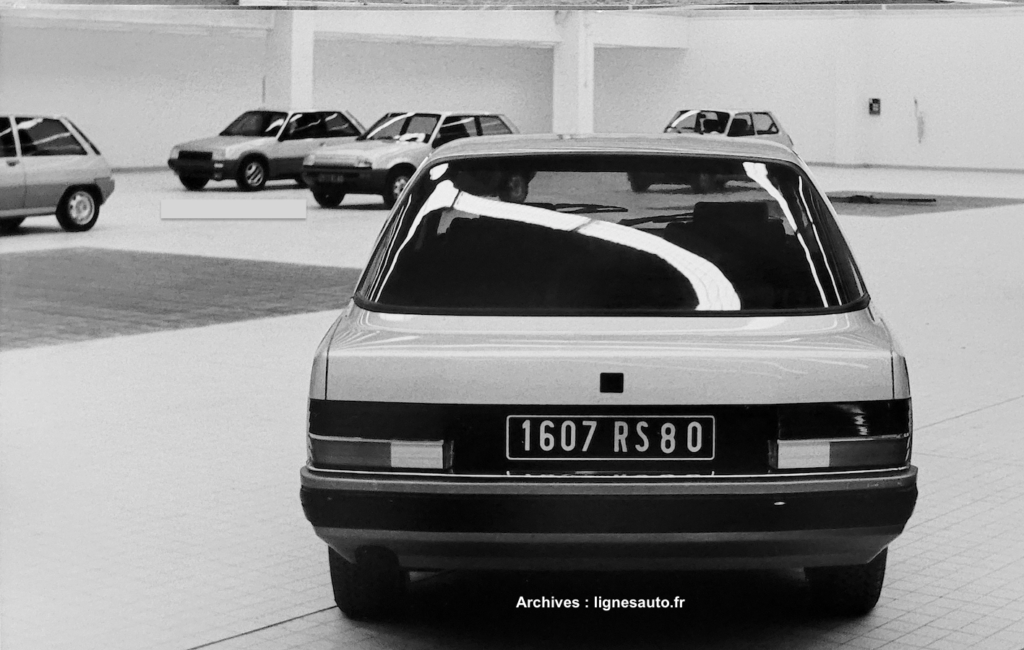
The styling freeze was rather epic, as Jacques Cheinisse later noted: “Following tests in February 1980, the Bicaéro was chosen, with difficulty, as there was strong pressure from the styling director (Robert Opron) in favour of the Rafale, and Bernard Hanon seemed to hesitate. And in June 1980, without any particular argument, it was decided to reduce the length of the Bicaéro by a second 10 cm. Robert Opron, who had not digested the Rafale’s sidelining, immediately re-launched the shortening of the Nocher-Venet model!“
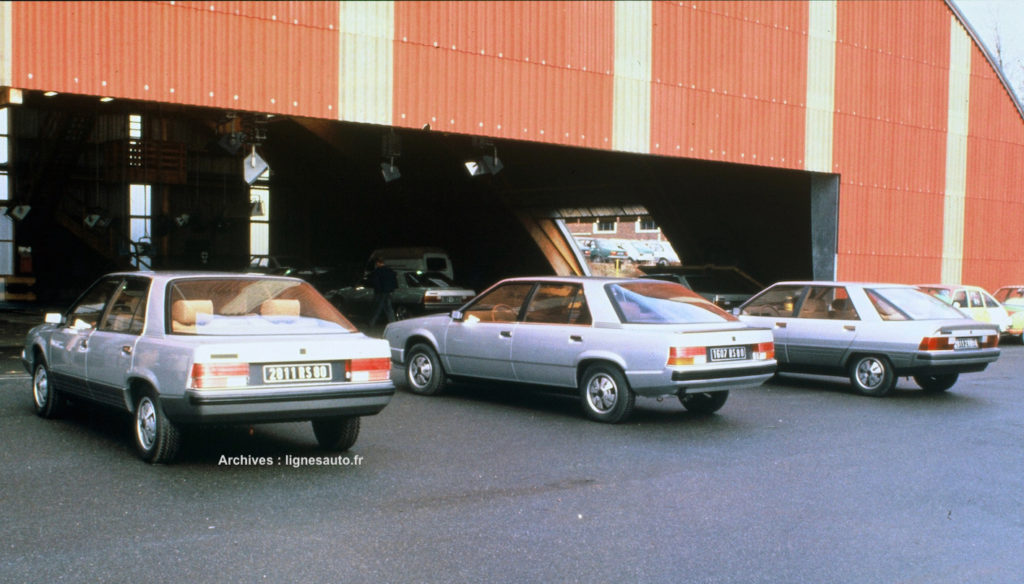
There was some confusion behind the scenes in terms of style and technology, as some people thought that the Rafale had finally been chosen. During the tests, Gaston Juchet’s two Bicaéro models were presented with a single Rafale. But the tests showed that customers associated this Rafale with a Citroën! Juchet’s Bicaéro was therefore chosen, marking the victory of a discreet man who was able to develop his talent and magnify it at the dawn of the 1980s. Gaston Juchet waited until 1984 before seeing his project in the street. One can imagine that he saw this last great success as a fine epilogue to a career spanning almost 30 years at Renault.

Below, the final mock-up that served as the styling gel. The genesis of the R25 shows the extent to which design – or rather style at the time – was constrained by technology and often neglected when faced with a fait accompli, such as the incessant variations in size.
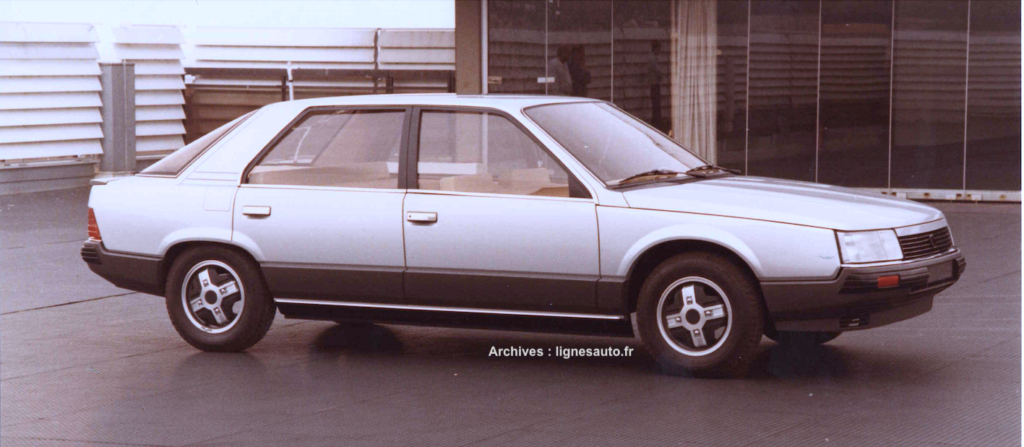
All this is unthinkable today. From then on, Renault styling handed over to the development engineers. The first rolling prototype took to the road for the first time, completely stripped of camouflage and unloaded from an anonymous old Renault truck, below.

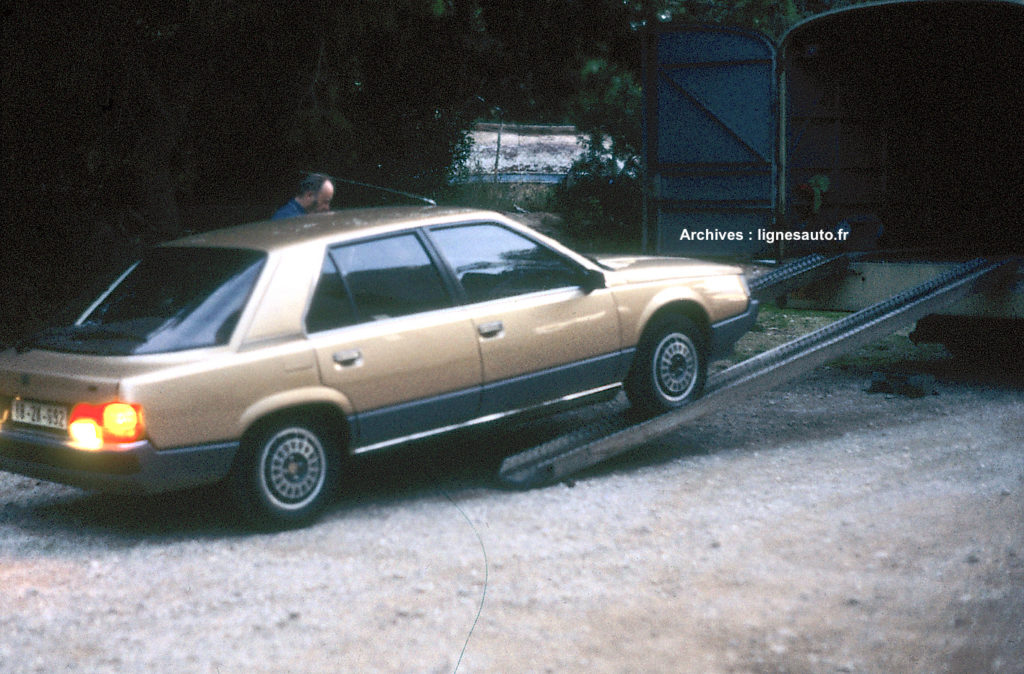
BONUS: the layout of the dashboard designed by Marcello Gandini.
Here are a few views of the layout of the Renault 25’s highly original dashboard. Remember, the R25 spoke with a very synthetic voice, but at the time it was almost science fiction!

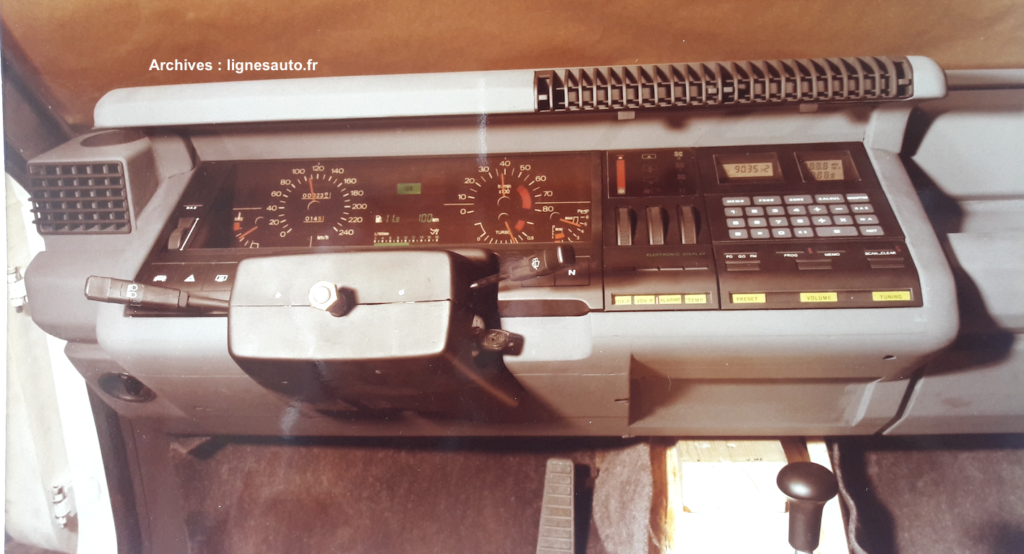

DISCOVER THE UNEXPECTED PROJECTS OF THE RENAULT BILINGUAL STYLE FROM 1960 TO 1987 “THE GASTON JUCHET ERA” IN THE BOOK WHICH WON THE “PRIX DU LIVRE HISTORIQUE AUTOMOBILE 2023” HERE: https: //www.youtube.com/watch?v=y9veCCVXckE Addresses for ordering it in the video

